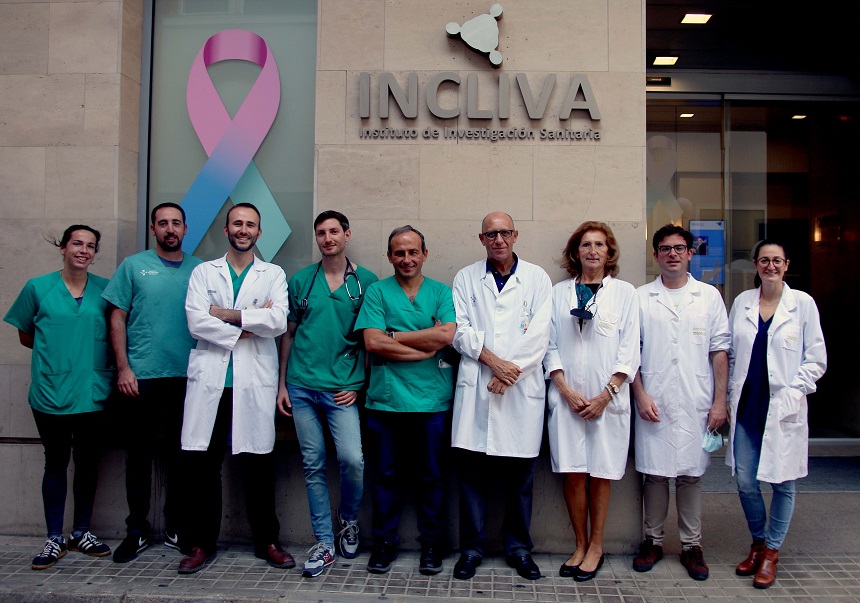A study shows the dual effect of epicardial fat in patients with acute myocardial infarction
- Scientific Culture and Innovation Unit
- March 27th, 2024

Researchers from several institutions, including the University of Valencia and the INCLIVA Health Research Institute, of the University Clinical Hospital of Valencia, have developed a study to evaluate the correlation between epicardial adipose tissue (the layer of fat covering the heart), with infarct size and reduction in cardiac function in the short (1 week) and long term (6 months) in acute myocardial infarction (AMI).
The images obtained, which have been studied using cardiac magnetic resonance techniques, have allowed us to observe the dual role played by epicardial fat, which, although it does not always correspond to greater obesity, is usually related to the accumulation of fat in other organs (visceral fat). On the one hand, obesity represents a risk factor for cardiovascular diseases, while, on the other hand, already established diseases tend to follow a more benign course in obese patients.
In the study, published in the journal Diagnostics, it was found that patients with high epicardial fat (>35ml/m2) have more extensive infarcts, but also that, once these extensive infarcts have occurred, the fat seems to exert a beneficial effect and preserves systolic function (which refers to the heart’s ability to contract and pump blood to the body) and the dilation of the left ventricle in the chronic phase (which causes the heart muscle to weaken and thin, making it unable to efficiently pump the necessary blood throughout the body).
The main researchers have been doctors Vicente Bodí, professor of the Department of Medicine of the University of Valencia, coordinator of the Translational Research Group in Ischemic Heart Disease of INCLIVA and head of Section of the Cardiology Service of the Clinical Hospital of Valencia; and César Ríos and HéctorMerenciano, from the same INCLIVA research group; as well as José Gavara, from the Centre for Biomaterials and Tissue Engineering of the Polytechnic University of Valencia.
Acute ST-segment elevation myocardial infarction (STEMI) consists of the sudden occlusion of a coronary artery, usually by a clot, and is one of the main causes of morbidity and mortality worldwide. Epicardial adipose tissue is a biologically active fat depot with modulatory effects on the myocardium located around the heart and along the main coronary branches. Several studies have related the extent of epicardial adipose tissue to the presence of adverse cardiovascular events.
However, in patients with acute myocardial infarction, the association of epicardial adipose tissue with acute myocardial infarction and cardiac function has barely been researched and there is controversy in the existing results. Therefore, more clinical and basic research is required to understand the role of epicardial adipose tissue after an acute myocardial infarction, as well as its possible therapeutic implications.
The study has been developed over the last two years thanks to a prospective registry of patients at the Clinical Hospital of Valencia. 221 patients discharged between 2010 and 2016 after a first reperfused acute myocardial infarction (whose blood flow has been reestablished) and with a cardiac magnetic resonance study at the first week were selected. Of these 221 patients, 167 were restudied with cardiac magnetic resonance at 6 months after acute myocardial infarction with ST segment elevation.
INCLIVA researchers and professors from the University of Valencia Francisco Javier Chorro, coordinator of the Experimental Cardiac Electrophysiology Research Group, also participated in the study; Julio Núñez, coordinator of the Heart Failure Research Group; and Juan Sanchis, coordinator of the Clinical Cardiology Research Group.
Article reference:Gavara J., Merenciano-Gonzalez H., Llopis-Lorente J., Molina-García T., Perez-Solé N., de Dios E., Marcos-Garces V., Monmeneu J. V., López-Lereu M. P., Canoves J., et al. «Impact of Epicardial Adipose Tissue on Infarct Size and Left Ventricular Systolic Function in Patients with Anterior ST-Segment Elevation Myocardial Infarction». Diagnostics. 2024; 14(4):368. https://doi.org/10.3390/diagnostics14040368
















